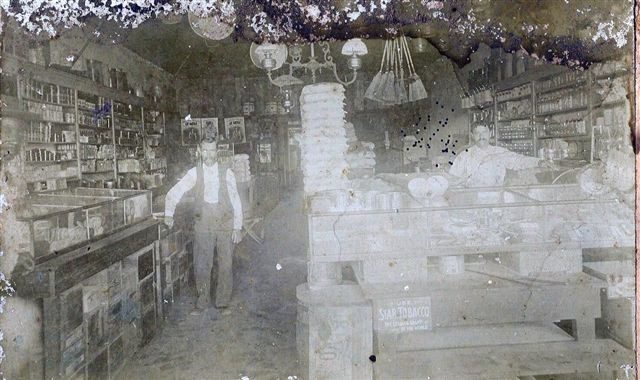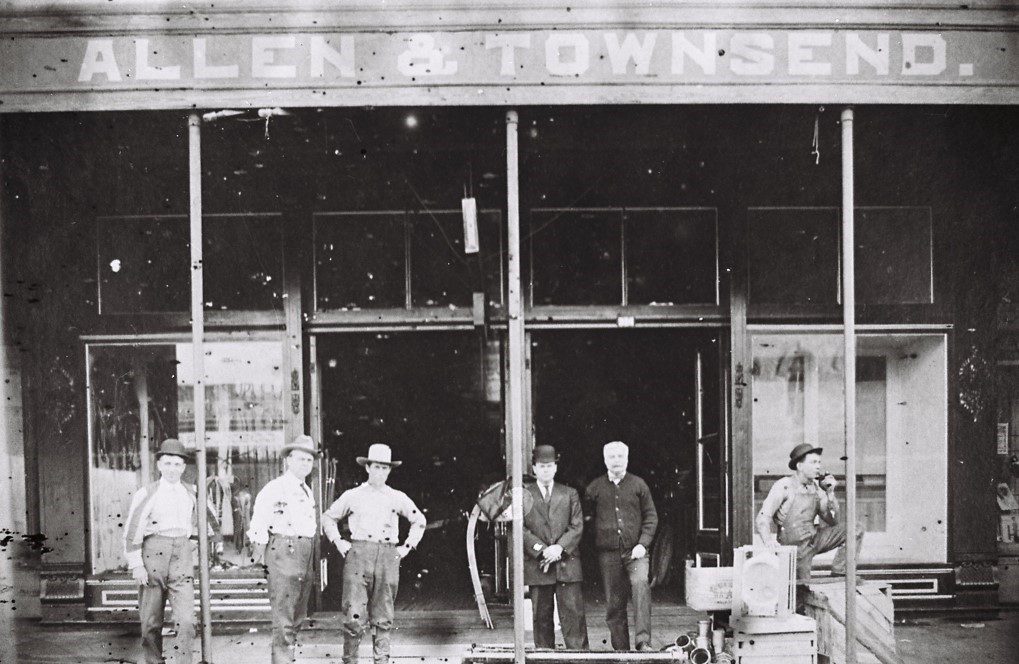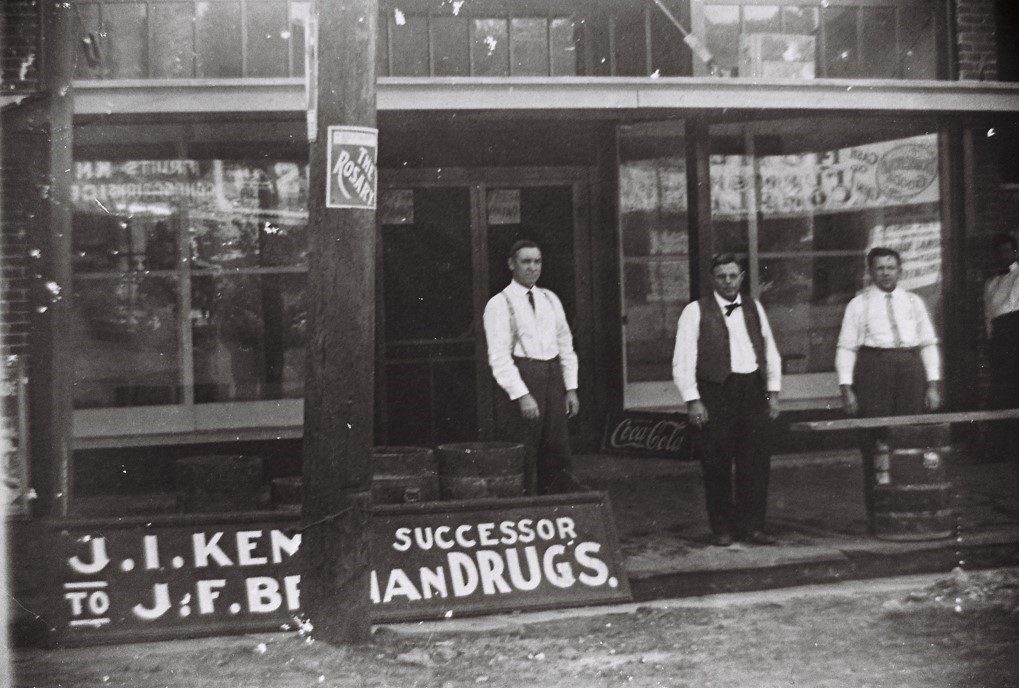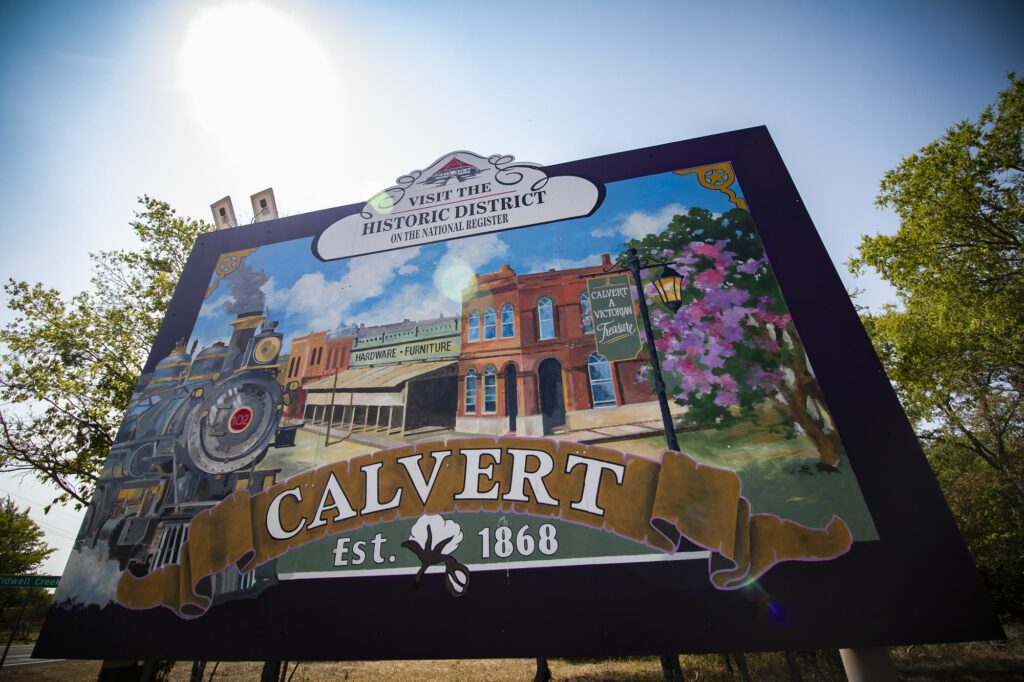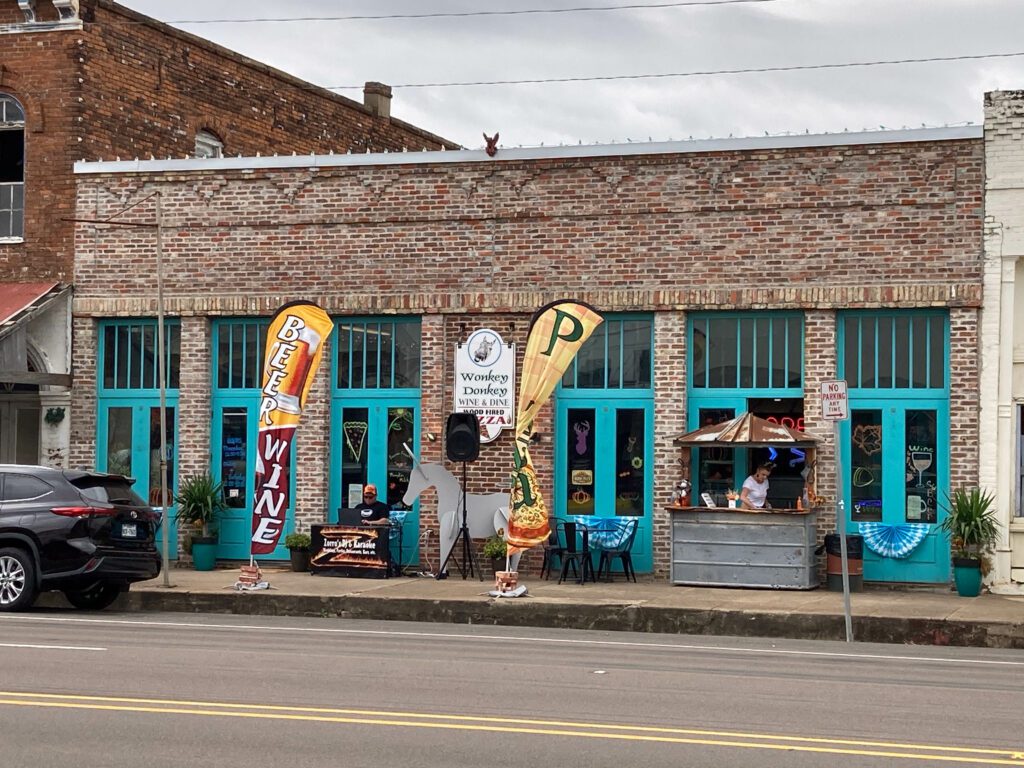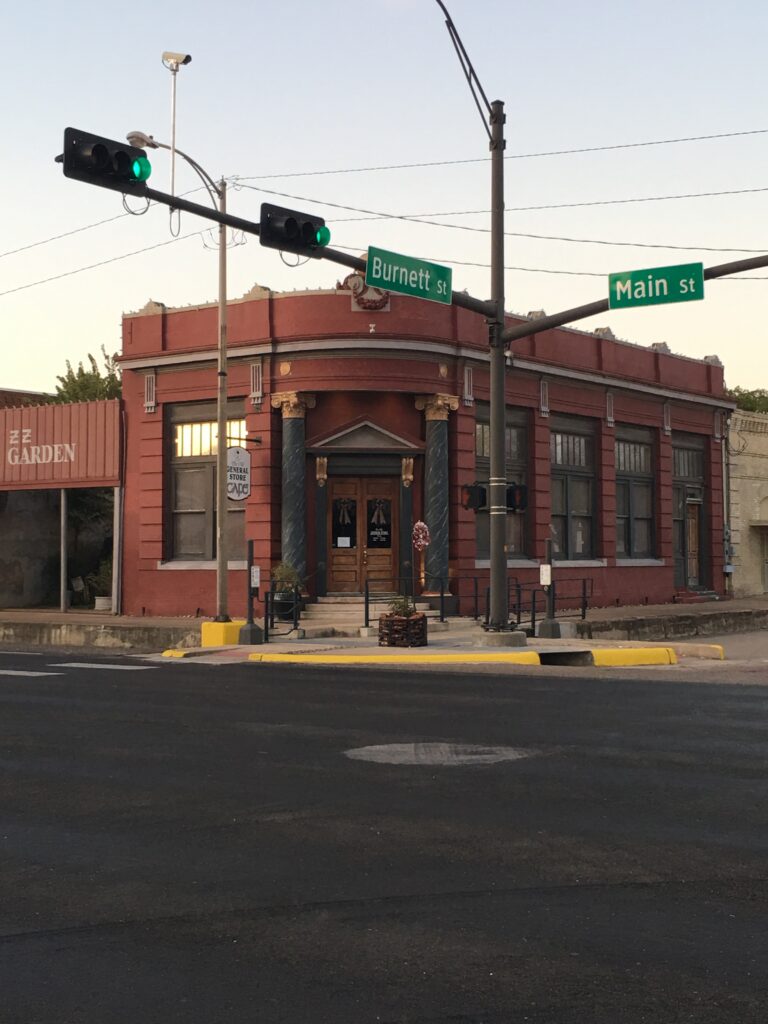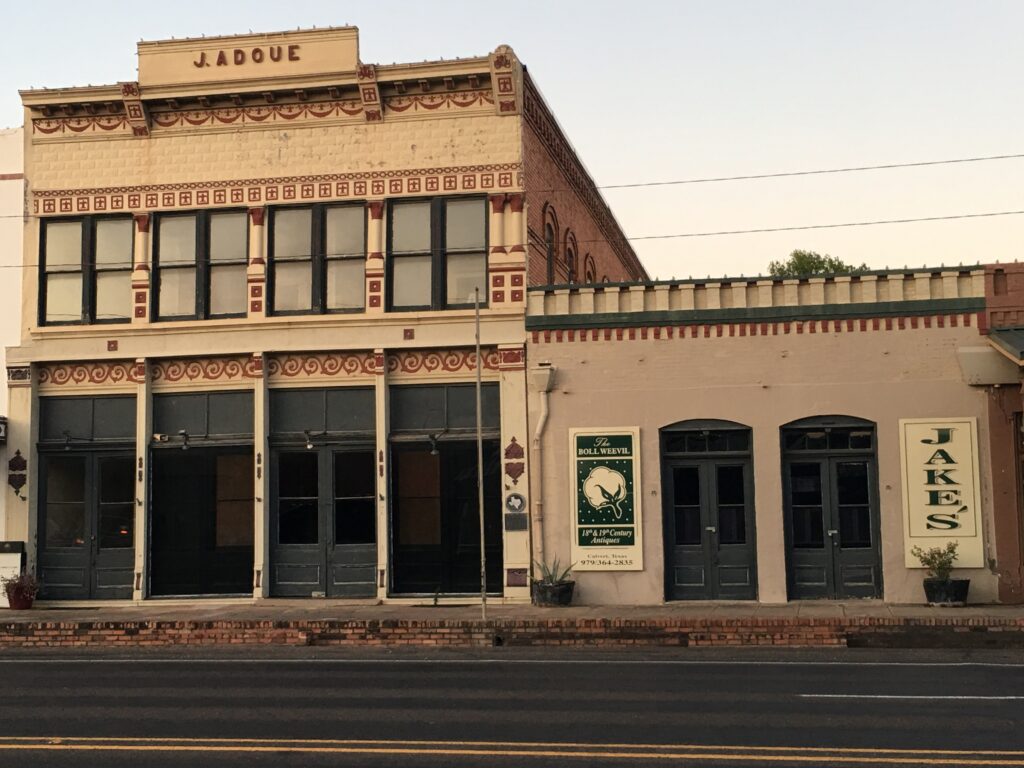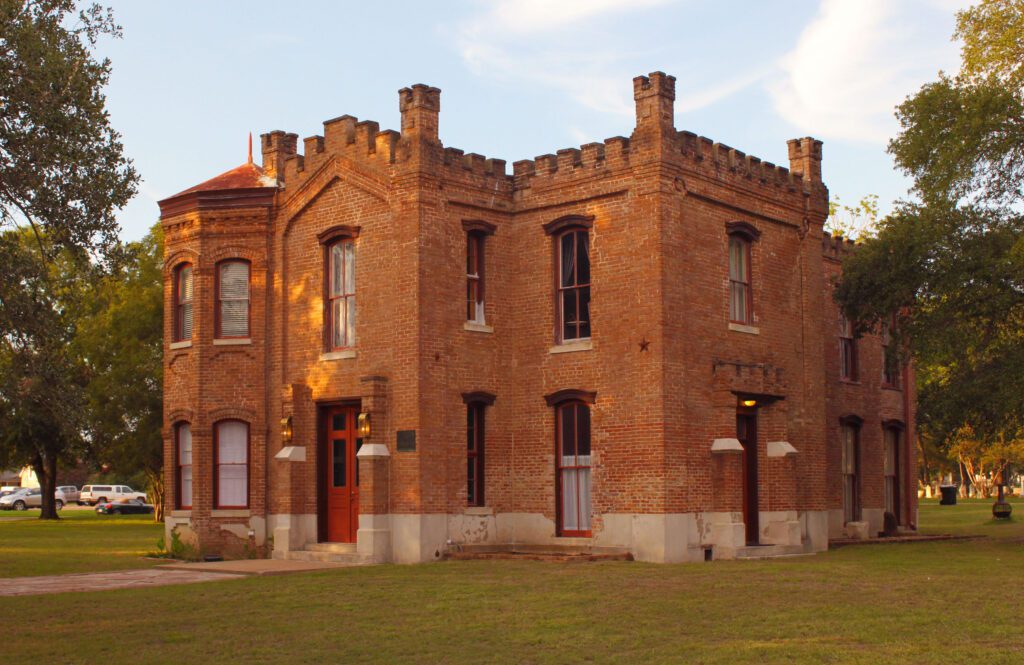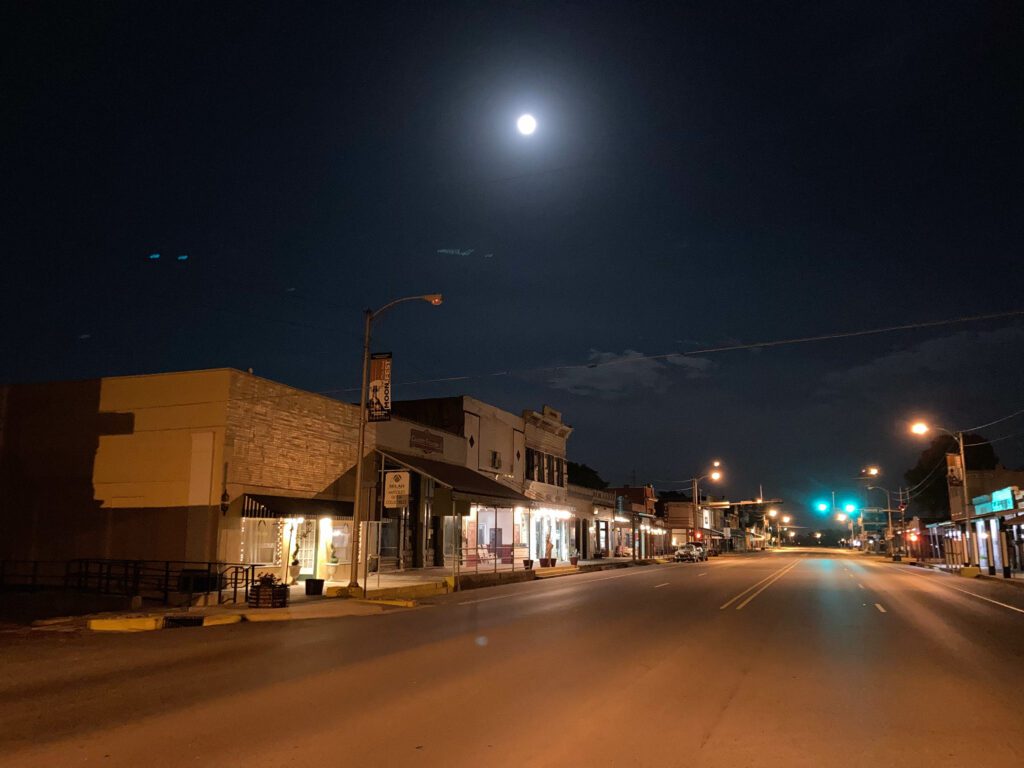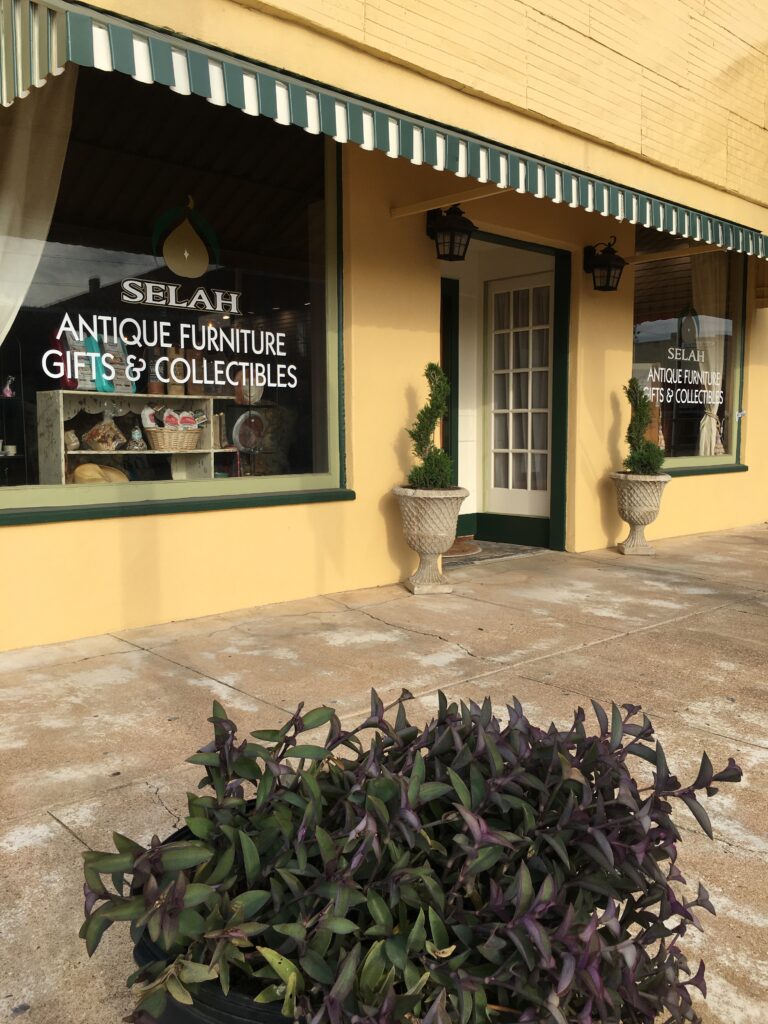Area Info
The History
of Calvert, Texas
This is the story of our hometown, Calvert, Texas.
There was a time when Calvert was a major city in Texas and competed with the likes of Dallas and Houston for prestige and influence. It boasted an opera house, a grand hotel, the largest cotton gin in the world, a population claimed to be as high as 10,000 (but only if you counted those camped on the outskirts of town), at least 14 saloons for Saturday nights, and churches for almost every denomination for Sunday mornings. Time moved on and left Calvert with a charm and ambiance rarely found today.
Calvert was born from the Brazos River and built on cotton and the railroad. Millions of years before the first human set foot in the Americas, the Brazos River flowed through what is now Central Texas carving a wide basin and leaving rich, alluvial soils behind. These soils would, in time, yield abundant harvests of cotton; more abundant than the ox-carts of the day could handle. A better means of getting the cotton to market was needed and that’s where the railroad came in. When that happened, Calvert flowered into a major economic center.
But we’re getting ahead of ourselves. Let’s go back to the early pioneer days when Texas was still part of Mexico. Entrepreneurs (land speculators, if you prefer) such as Stephen F. Austin and Sterling Clack Robertson began petitioning the Mexican government to allow them to bring American families to Texas. I’ll spare you the convoluted political, legal, and personal wrangling needed for this to happen, but by the mid-1830s Robertson began bringing families into the Brazos Valley.
This was not an easy life for these hardy pioneers. The land had to be cleared while battling Indians, outlaws, disease, floods, mosquitoes, and other forms of misery. They had to live off what they grew, so at first they raised corn, beans, pigs and cattle. Cotton farming came later.
The first person to raise cotton in the Brazos Valley is thought to be J.R. Robertson, cousin of Sterling Robertson sometime after 1837. By 1850, 429 bales were produced in the county, which still wasn’t very much. It was easy enough to grow cotton in the Brazos Bottom, but the problem was getting it to market. Ox-carts of the day could only carry about ten bales of cotton, and they had to be driven over barely navigable roads.
Steamship captains and flatboat operators eyed the Brazos as a possible transportation line between Robertson County and Houston, but the Brazos proved to be too fickle. Depending on the water level, the Brazos was navigable as far upstream as the shoals at Port Sullivan. During flood stages, paddle wheels could get past the shoals and make it as far as the Falls of the Brazos near Marlin.
While ship captains puzzled over working with the Brazos, railroads began moving into the interior of Texas. Robert Calvert was a planter, philanthropist, and visionary. Prior to the Civil War, The Houston and Texas Central Railroad had built tracks as far inland as Millican, about 45 miles south-east of Calvert, but was unable to extend it beyond that. Robert Calvert saw the potential of the railroad and he, along with James Hanna, cleared a path and cut ties for the railroad to continue the line to Calvert. Once the war was over, the H&TC Railroad completed the line to Calvert, and, for a time, Calvert soon became the terminus of the railroad.
The first train pulled into Calvert in June 1869 carrying building supplies, farming machinery, and passengers. It was met with over 100 wagons loaded with raw materials from throughout the interior of Texas. Calvert’s population and economic influence exploded at that point.
In January of 1870, just six months after the first train, Dun and Bradstreet reported that Calvert had 104 businesses. Many of these businesses came from towns bypassed by the railroad, but others – Sanger Brothers, Mistrot, Padgett Brothers – were from major cities. Calvert had every kind of business imaginable: grocery stores, banks, drug stores, dry goods, saddleries, etc. There were even stores selling specialty items like confectioneries, books, and glassware. Calvert boasted grand hotels, an opera house, and the largest cotton gin in the world.
Calvert also had saloons. Lots of saloons. Fourteen by one count, and that doesn’t include places that sold alcohol “under the table”. Richard Denny Parker in his book “Reflections of Robertson County, Texas” describes it like this:
“Saloons and dives opened up and ran 24 hours a day seven days a week. The swinging doors of the saloons flapped constantly, and the barber shops that were built on the corners with a back door entering the bars behind a screen ostensibly did a thriving barber business all day long and until closing time at night. Through these entrances went those of convivial tendencies who found it necessary to conceal their patronage of the saloons. General stores usually sold whiskey by the gallon and stocked it in barrels. The proprietors kept drinking glasses handy for their preferred customers who were welcome to draw a snort from the barrel. Before local option and the eradication of the open saloon, it was not hard to find a place where whiskey was dispensed by the drink.”
Calvert had a diverse population. The first planters came mostly from the southern states, and they brought with them their slaves to harvest the cotton. The HT&C Railroad imported Chinese to help build the railroad line. Once Calvert began to boom, people migrated to Calvert from all over the United States and the world. A stroll through Calvert’s cemetery reveals graves of those born in Tennessee, Alabama, Arkansas, England, France, Germany, etc. The Jewish cemetery behind the high school shows that Calvert also had a significant Jewish population at one time.
Calvert briefly served as Robertson County’s seat of government from 1870 To 1879. This was the county’s fourth, but not last, county seat. No courthouse was ever built, but a fine jail made of locally kilned brick was erected and stands today. The county seat was moved one last time to Franklin, and a new jail was built there.
No telling of Calvert’s history can omit the Yellow Fever epidemic of 1873. Yellow fever was not uncommon in coastal areas of the South. An epidemic in 1867 turned several towns into ghost towns almost overnight. Calvert’s epidemic began in September 1873 when a young man from Shreveport disembarked from the train, checked into a hotel in town, and began showing yellow fever symptoms. Within days he was dead, and the fever had spread throughout the town. It is estimated that 60% of the population had the fever and about a quarter of them died. This tragedy is etched on the gravestones of the local cemeteries bearing death dates of the fall of 1873.
Calvert served as the terminus of the HT&C Railroad for less than three years after which tracks were laid going north toward Dallas. This marked the end of Calvert’s glory days, but it still prospered for many years. Some of Calvert’s most impressive homes were built after 1900 suggesting a confidence in the town.
Today, Calvert serves as a “living museum” of a time long past. It is the fourth largest historic district in Texas. Many of the beautiful Victorian homes built by the early planters and their descendants remain. Most of the Main Street businesses still have the original storefronts.
We are proud of our heritage and look forward to sharing our history when you come to visit.

